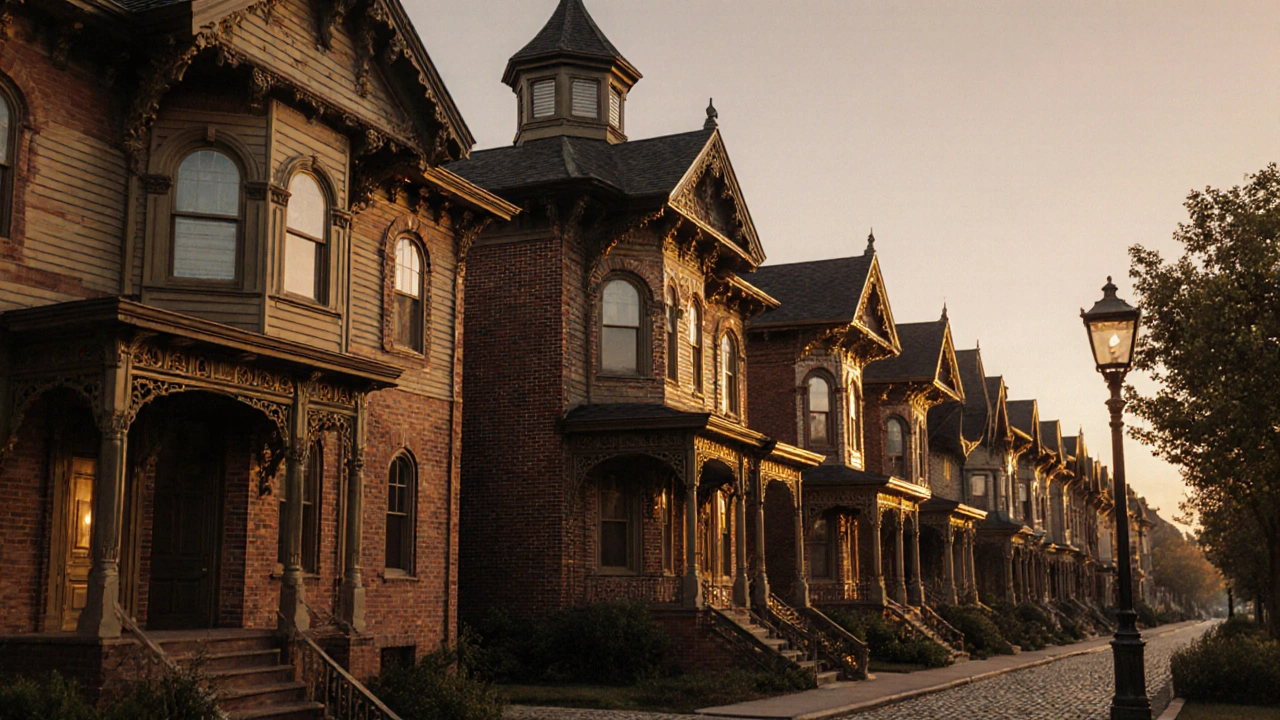Italianate architecture brought Tuscan villa charm to 19th-century homes with bracketed eaves, arched windows, and towers. Its influence still shapes modern design, from historic restorations to today’s farmhouse trends.
Ornate Cornices: The Hidden Art of Architectural Detail
When you look up at the top of an old building, what you see isn’t just a roofline—it’s ornate cornices, decorative moldings that crown the edges of buildings, often carrying intricate carvings, scrolls, or floral patterns. Also known as decorative eaves, these elements weren’t just for looks. They signaled wealth, taste, and craftsmanship in a time when every detail had meaning. You’ll find them on 18th-century townhouses in London, grand government buildings in Paris, and even in modern homes that borrow from the past. They’re not background noise—they’re the punctuation marks of architecture.
These details didn’t appear by accident. They’re tied to movements like Baroque architecture, a dramatic style from the 17th century that used bold curves, gold leaf, and layered ornamentation to impress and overwhelm, and Rococo style, a lighter, more playful offshoot that turned cornices into delicate lace-like borders filled with shells, vines, and cherubs. Even Beaux-Arts architecture, the grand, academic style that shaped early 20th-century public buildings in the U.S. and Europe, relied on cornices to tie together massive facades with a sense of harmony and control. These weren’t random flourishes—they followed rules, passed down through schools and workshops, and were applied with precision.
What makes ornate cornices so powerful is how they turn function into art. A cornice’s original job was simple: to protect the wall from rainwater by pushing it away from the building. But over time, builders and artists turned that practical edge into a canvas. In Italianate homes, you’ll see bold, bracketed cornices that look like they’re holding up the sky. In Georgian houses, they’re clean and balanced, echoing the symmetry of the whole facade. And in Rococo interiors, they curl and twist like frozen music. Each variation tells a story about who built it, when, and why.
Today, you don’t need to live in a palace to appreciate them. Even in quiet neighborhoods, a well-preserved cornice can be the difference between a house that feels alive and one that feels flat. Restorers fight to keep them. Designers copy them. And in places like London’s Mayfair or New York’s Upper West Side, they’re protected by law—not because they’re old, but because they’re irreplaceable.
Below, you’ll find a collection of posts that dig into the buildings where these details shine. Whether it’s the drama of Baroque facades, the elegance of Georgian symmetry, or the playful curves of Rococo interiors, you’ll see how ornate cornices aren’t just trim—they’re the signature of a whole era.

